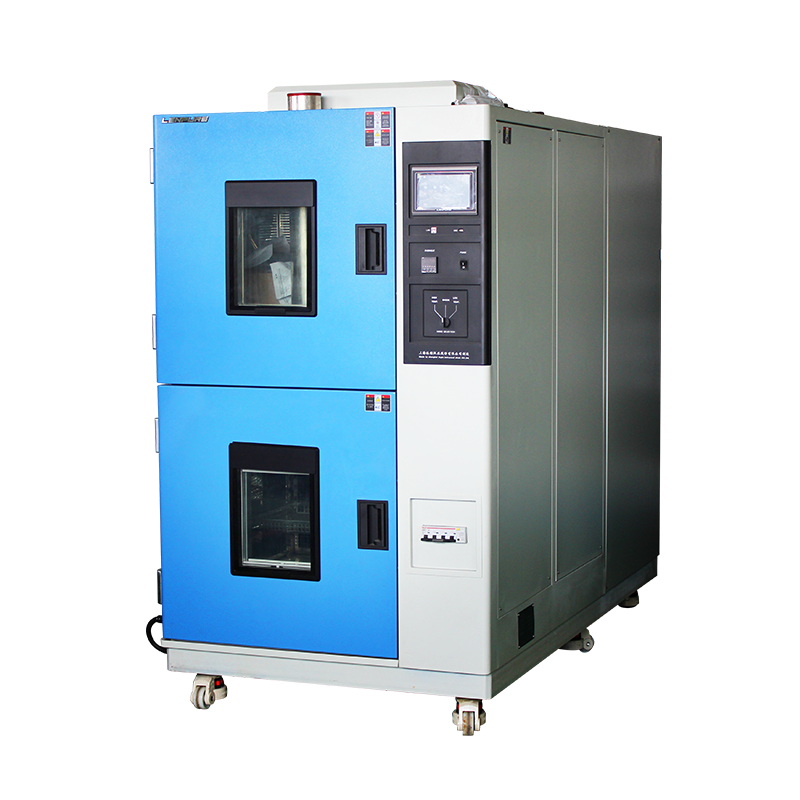

During the transportation of a thermal shock test chamber, technicians often remind operators to keep the equipment as level as possible to avoid oil blockage. But what exactly causes oil blockage in a thermal shock test chamber? And how can we resolve it if it occurs?
If the thermal shock test chamber is tilted at a significant angle during operation, the compressor’s refrigeration oil may flow from the suction pipe into the low-pressure chamber. When the compressor restarts for cooling, the refrigeration oil can be drawn into the cylinder. This leads to a sudden increase in the compressor’s load (since compression ratio is determined by gas volume, and liquids are nearly incompressible). More critically, when the refrigeration oil enters the condenser and then flows through the dryer filter into the narrow capillary tube, it can cause a blockage—commonly known as oil blockage.

How to Resolve Oil Blockage in a Thermal Shock Test Chamber?
Shut off the process pipeline, release the refrigerant, and connect a service gauge valve.
Remove the dryer filter by desoldering it.
Purge with nitrogen through the service valve—when nitrogen flows out from the capillary tube connected to the dryer filter, maintain the flow for about one minute to flush out any trapped refrigeration oil.
Periodically release pressure by briefly (3–5 times, ~10 seconds each) removing your thumb from the condenser pipe opening to allow any remaining refrigeration oil to escape.
Disconnect the capillary tube and close the service valve.
At this point, the oil blockage should be mostly cleared. To ensure complete removal, repeat the nitrogen purging process.
Install a new dryer filter, evacuate the system, and recharge it with refrigerant.
Test the chamber to confirm normal cooling function in both high and low-temperature modes.
After resolving the oil blockage, operators should inspect all components to ensure no damage has occurred before putting the test chamber back into service.